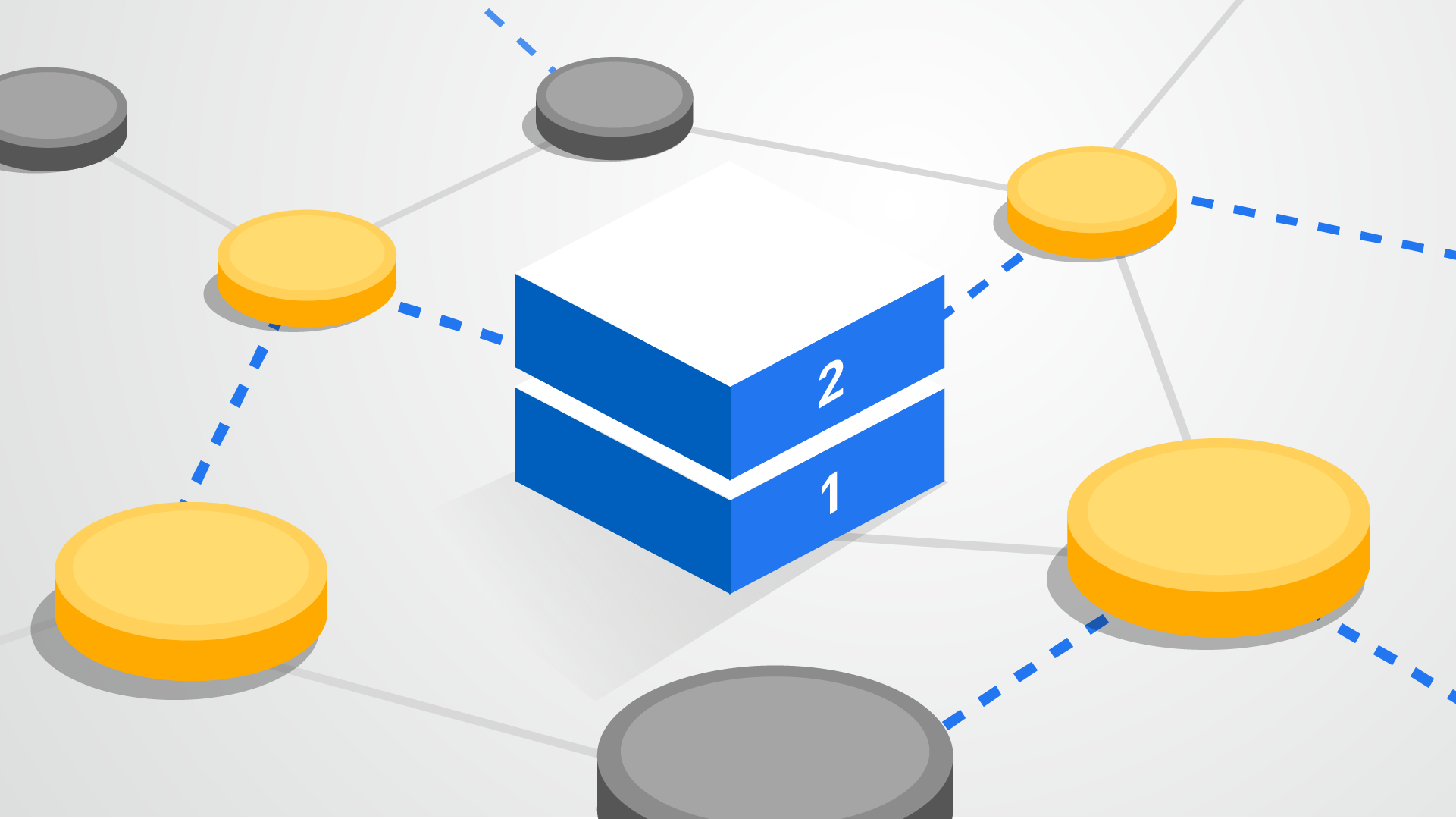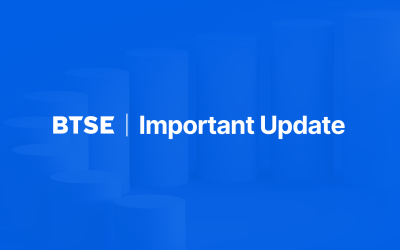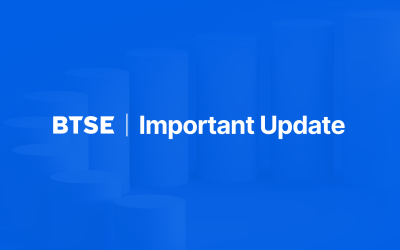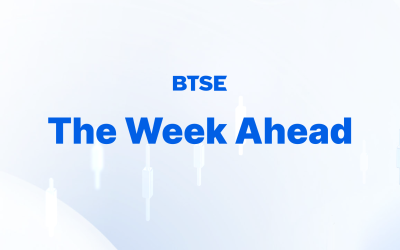The fascination with DeFi, and its draw for many, can be credited to its foundational integrity as well as functional versatility — complementary differences that help explain Layer 1 and Layer 2.
Decentralized finance is extremely complex and rapidly expanding. In order to have a working model for any service in DeFi, it needs an advanced structure of components involving not just innovating programming in the form of blockchain technology, but also being careful of the critical tones of financial economics. One misalignment in either the programming aspect or the financial one can result is devastating losses or network failures.
As a result, DeFi is set up in a way that helps prevent marketwide issues. In the same way DeFi is decentralized, so is the idea that all the projects can be layered on top of each other or work parallel to each other. This layering in DeFi is where the common terms Layer 1 and Layer 2 solutions come from.
But what is a Layer 1 solution, and how does it differ from Layer 2?
Explaining the DeFi Ecosystem
In order to explain the concepts and characteristics of the different layers within decentralized finance, it’s important to understand how DeFi, and the DeFi ecosystem, is designed to operate. As with most ecosystems, there are some foundational components that need to be considered and addressed.
For DeFi, this requires a certain degree of decentralization, meaning that the service in mind must be distributed amongst enough people where it prevents control by one particular group or idea. In addition, DeFi also means that it should benefit all parties involved on an equal level.
The structure of the ecosystem as a whole is best explained in the same fashion as an economy or an established city. In order for a community to develop into a town and eventually into a city, a common bond needs to be formed, and eventually, mutual development begins to better these common bonds. As a result, small businesses form, then businesses work together, and eventually those people start working on things that help the city grow as a whole.
Eventually, growth occurs in the form of transportation, and afterward, there are features and benefits that take advantage of this growth. For example, automobiles or trains become available as transportation becomes more advanced, goods and services start being delivered through direct-to-door shipping like Amazon instead of going to the store. Once a city grows big enough to become a metropolitan area, then sub-cities and neighborhoods occur.
This is much like the blockchain and DeFi ecosystems. Almost every blockchain or service in the DeFi network is categorized into numbered protocols: Layer 1 and Layer 2. Now we are also on the verge of Layer 3 protocols.
Layer 1 Blockchain Solutions
In the DeFi ecosystem, Layer 1 solutions are the basic and foundational working parts of the network. These solutions are the pillar structures with which the entire ecosystem benefits directly from and is able to communicate with. As such, these structures also serve to hold integrity for other projects to do more advanced applications that otherwise could not be done.
For example, Amazon shipping could not be done without the infrastructure of housing, communities, transportation, and logistics. In the same way, Layer 1 solutions make up the baseline functionality of the network. Layer 1 protocols can be stacked, in a way that allows projects to excel.
The most common examples of Layer 1 solutions are Ethereum, Polkadot, Cosmos, Binance Smart Chain, Band Protocol, Solana, and Nervous Network. Bitcoin can also be considered Layer 1. Blockchains like Ethereum, Polkadot, and Binance Smart Chain help create foundations for the entire ecosystem. For example, Ethereum is the first and biggest blockchain that enables smart contacts so projects can work on top of Ethereum, making it possible to focus more on developing advanced applications.
In this way, Ethereum smart contracts help enable projects like Aave and Compound by creating a token standard called ERC-20. Applications like Uniswap, Sushiswap, Balancer, and NFTs are all made possible because of Ethereum. Those and other projects like Balancer and Compound are stacked on top of the Layer 1 solution provided by Ethereum.
Layer 2 Blockchain Solutions
The foundational projects of Layer 1, and the benefits they generated, helped make the idea of Layer 2 protocols become a reality. Layer 2 blockchain solutions are functional components of the blockchain that can be stacked on top of the foundation that Layer 1 provides.
In the example of the city economy, where Layer 1 is the businesses and roads, Layer 2 solutions are custodial services, vendor deliveries, and advanced transportation that the city inherits. The key benefit of Layer 2 solutions is the ability to create something more advanced given the lack of need to rebuild the foundational features that Layer 1 already provides. In addition, Layer 2 solutions can directly take advantage of Layer 1 projects to help make the ecosystem better.
For example, we have established that blockchains like Etheruem, Polkadot, and Binance Smart Chain are all Layer 1 solutions and Etheruem enables projects like Compound and Balancer to exist and for Uniswap to be utilized. The major downside to these projects is that they can only exist and function well if the Layer 1 projects work effectively. If something hinders the ETH chain, such as gas congestion or a problem with ERC-20 compatibility, then Layer 2 projects would be insolvent.
Many projects that are Layer 2 and even projects like Polkadot, which was designed to be Layer 1, all have some minor characteristics of Layer 3 solutions. A Layer 3 solution, in short, has the ability to cross-communicate between different Layer 1 or Layer 2 solutions. One way to think of this is Layer 2 projects stack vertically while Layer 3 solutions work horizontally like bridges.
Progress Towards More Possibilities
DeFi is very complex but also very rewarding to participate in. As the ecosystem grows exponentially, it enables all of us to participate in advanced ways that we didn’t think possible even within the past year. Layer 1 solutions help lay the foundations of this ecosystem, while Layer 2 solutions help advance the network’s progress. Meanwhile, Layer 3 solutions are on the way, thanks to the road paved by its precedents.
Our aim is to create a platform that offers users the most enjoyable trading experience. If you have any feedback, please reach out to us at feedback@btse.com or on Twitter @BTSE_Official.
Note: BTSE Blog contents are intended solely to provide varying insights and perspectives. Unless otherwise noted, they do not represent the views of BTSE and should in no way be treated as investment advice. Markets are volatile, and trading brings rewards and risks. Trade with caution.








